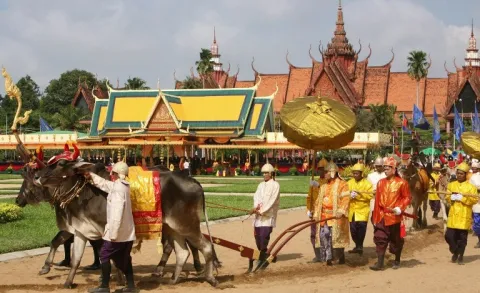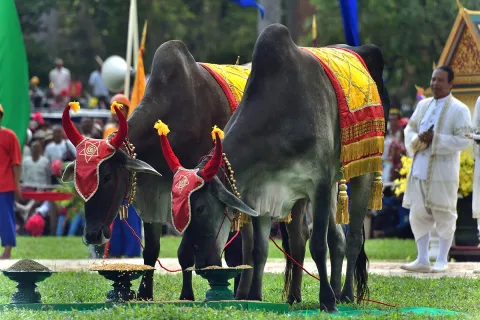News

Do's And Don'ts In Cambodia: 13+ Fascinating Tips - ling-app.com
Are you planning to spend your vacation in the temple country this season? Well, I can’t blame you. Cambodia, a land filled with smiles and a rich cultural heritage, has recently become a sought-after tourist attraction. The Cambodian and Buddhist culture has attracted many foreigners from different corners of the world, making Cambodian society a prosperous tourist destination.
While Cambodian people are pretty friendly and welcoming, some unwritten rules will help you avoid accidental offenses from being made unintentionally. Thus, in today’s blog post, we will walk through some of the essentials Do’s and Don’ts in Cambodia to get acquainted with the code of communication and prevent cultural shock. We must remember that it is a traditionally equipped country still very restricted and reserved in its etiquette and manners. So, a few basic rules will surely become a great asset for you. If you are interested, let’s jump right into it.
Essential Do’s And Don’ts In Cambodia
Following some do’s and Don’ts is imperative as it will help you adapt to the local cultural customs, show respect for their beliefs and cultural differences, and let the locals act more warmly towards your presence. Cambodian people love when foreigners try their traditional rules and language. So, learning the subsequent unwritten rules will only bring kindness to your personality and avoid unintentional shocks.
First, we will go through all the Do’s in Cambodia that will help you do the right things. And later, we will discover the Don’ts that will let you realize what is wrong and what you should avoid. Let’s see what they are!
Do’s In Cambodian Culture
Here is a list of things you must follow strictly when you visit Cambodia. These local customs must not be disturbed.
1. Do Return A Smile
If you have researched Cambodian people, I am sure you have seen thousands of smiling faces on your web page. Well, that is the reason why Cambodia is known as the land of smiles. Cambodian people smile at each other as a sign of friendliness and respect. So, locals tend to smile whenever travelers and foreigners greet them and make them feel welcome. In such cases, it is expected that you return a smile for a smile instead of ignoring them and making things awkward.
2. Do Bow And Greet
When it comes to the traditional Cambodian greeting, you must remember the tradition of bowing. Known as Som pas, Khmer people greet each other with a slight bow and take their palms together in a prayer-like gesture in front of their chest. Unlike western cultures, where a handshake mainly follows a “Hi” or a “Hello,” Cambodians perform the Som pas as a gesture of respect and kindness. They believe the lower the bow, the more respect. Also, it is essential to remember that if you wear a hat or cap, remove them before going into a bow.
Som pas is practiced according to the hierarchical arrangements. The gesture is believed to be higher when greeting someone elderly or of excellent status, with the fingertips pointing higher and touching the chin or the nose. This tradition is also followed when apologizing or requesting a favor.
3. Do Dress Decently
One of the most important things to do once you reach the unique cultural land is to dress appropriately. Modest and decent dress is the rule in Cambodia, where you must avoid wearing t-shirts and tight pants with revealing patterns. Although the hot weather and extreme temperatures will keep long pants or dresses away from your wardrobe, you are expected to cover as much skin as possible.
Especially concerning women, a Cambodian person should dress conservatively without any provocative detail. When you visit temples or enter a government building, always try to wear decent clothing. Even though tourists wear shorts and short-sleeved shirts, and have caused the local dress to be flexible, keep decency in mind, especially while entering sacred grounds.
4. Do Take Off Shoes And Hats
As much as Southeast Asian houses are concerned, always take off your shoes before entering the house. Asian families either roam bare feet or wear in-house slippers inside the house. However, you can wear them if the family asks you to do so.
Another place that you must take your shoes and hats off is while visiting temples. Cambodians are deeply religious, and impure acts are not accepted when it comes to their temples and pagodas. Always keep them outside and remove your hats to show respect and maintain decorum. To make it convenient for yourself, try wearing flip-flops that are easy to remove and wear.
5. Do Learn The Language
If you want to have a native experience, it is important to go local. Cambodians appreciate when travelers learn their language and participate in local language conversations. Also, many Cambodians address people with native phrases when they see newcomers. They will likely be touched and welcome you more respectfully if you reply and engage with them in the Khmer language.
6. Do Manage Your Routine
Another essential tip for a local experience is to follow the local men routinely. And by that, we mean waking up early and resting mid-day. Since Cambodia is a hot and humid country, locals always wake up early to meet their ends because afternoons can be extremely humid and tiring. If you want the best of the country, make sure you wake up early so that by 8 am, you will have a full swing of market strolls, temple visits, sightseeing, and more.
7. Do Be Careful Around Buddhist Monks
Since Cambodia is a Buddhist country, it is necessary to follow this rule. Buddhist monks are deeply revered and respected in the state. You cannot touch them or share anything with them directly. Especially if you are a woman, keep your distance and never brush up against them. Even the monk’s mother is restricted from such actions. The point is always to show respect and ensure you follow the locals’ norms concerning monasteries and their traditions.
8. Do Take Permission Before Photos
Once you reach the land, you will be awe-struck by the people and architecture. In such cases, your camera will become your best friend. However, it would help if you asked for permission before photographing anything, whether people or houses. Especially in places like Ratanakiri, people are likely to let you click pictures of them only if there is consent.


